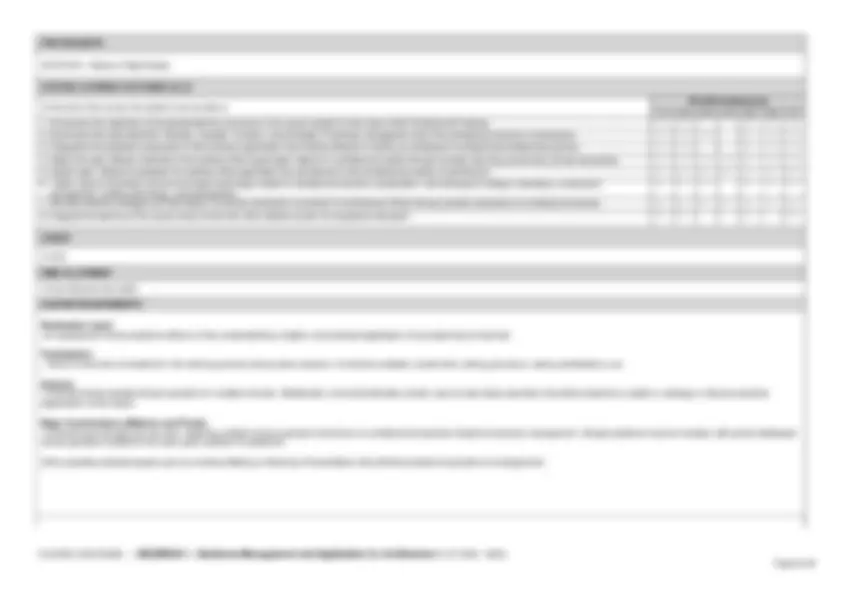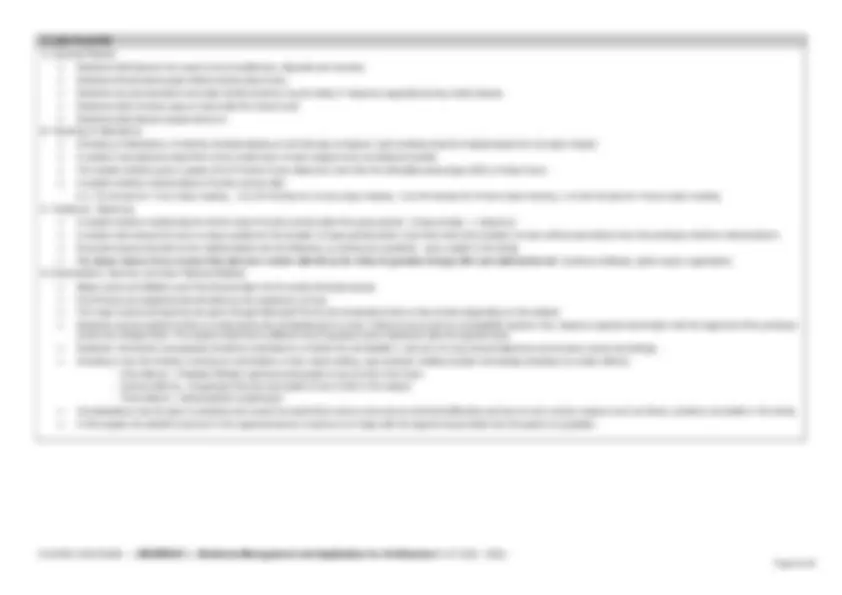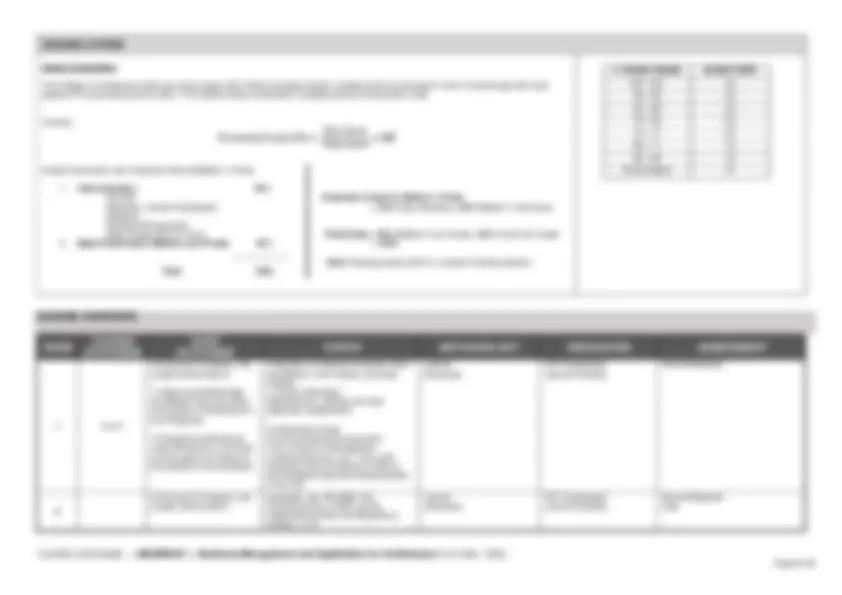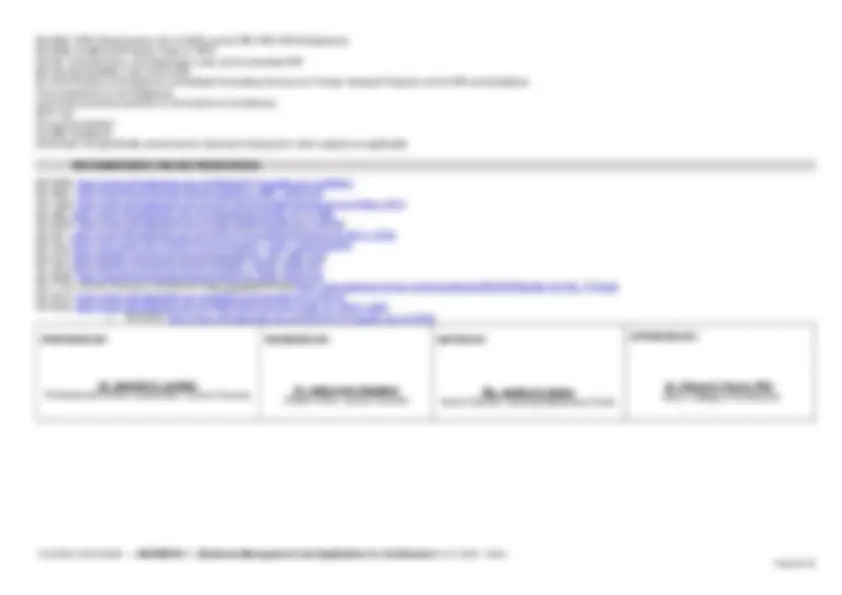






Study with the several resources on Docsity

Earn points by helping other students or get them with a premium plan


Prepare for your exams
Study with the several resources on Docsity

Earn points to download
Earn points by helping other students or get them with a premium plan
Community
Ask the community for help and clear up your study doubts
Discover the best universities in your country according to Docsity users
Free resources
Download our free guides on studying techniques, anxiety management strategies, and thesis advice from Docsity tutors
The curriculum and course details for the subject 'business management and application for architecture 1' at national university, a private institution in the philippines committed to nation-building and recognized internationally for its education and research. The course aims to provide students with knowledge and skills related to the legal and regulatory aspects of the architecture profession, including relevant laws, codes, and standards. It covers topics such as the architects law (ra 9266), the building and planning laws (pd 1096, pd 957, bp 344, etc.), and other relevant legislation. The course is designed to help architecture students understand the ethical and value dimensions of the laws as they apply to the practice of the profession, and to integrate this knowledge with other related courses for a progressive education. Detailed information on the course structure, learning outcomes, assessment methods, and recommended resources.
Typology: Schemes and Mind Maps
1 / 8

This page cannot be seen from the preview
Don't miss anything!





We are National University, a dynamic private institution committed to nation-
building, recognized internationally in education and research.
FOR NATIONALIANS (GAINs)
Guided by the core values and characterized by our cultural heritage of Dynamic
Filipinism, National University is committed to providing relevant, innovative, and
accessible quality education and other development programs.
We are committed to our:
STUDENTS, by molding them into life-long learners, ethical and spiritual
citizens, and self-directed agents of change.
FACULTY and EMPLOYEES, by enhancing their competencies, stimulating
their passions, cultivating their commitment, and providing a just and fulfilling
work environment.
ALUMNI, by strengthening their sense of pride through engagement, loyalty,
and love for their alma mater.
INDUSTRY PARTNERS and EMPLOYERS, through active collaborations,
providing them Nationalians who will contribute to their growth and
development.
COMMUNITY, by continuing to the improvement of life’s conditions and well-
being of its members.
a. Exhibit moral, ethical and competent leadership
b. Collaborate effectively in teams of different cultures.
c. Participate actively in community-oriented advocacies that contribute
to nation-building.
Thinking
d. Develop an entrepreneurial mindset.
e. Provide solutions to challenges in various fields of specialization and
society in general.
Competence
f. Demonstrate mastery of foundational skills and specific areas of
specialization.
g. Express ideas meaningfully, accurately, and appropriately in
multicultural and multidisciplinary contexts.
i. Engage in continuing personal and professional development.
j. Exemplify the capacity for self-reflection.
k. Demonstrate adaptability, flexibility, productivity, and accountability in
diverse settings.
l. Exhibit mastery in navigating various technological tools and
techniques
In line with the university’s contribution to the National Development through contributing to the localization efforts of the Sustainable Development Goals of the United Nations, the College of Architecture, National
University – Manila recognizes the possible contributary activities it could offer to maximize the potentials of the institution through integrating the UN-SDGs in the curriculum of each subject matter. The main
objective is to educate the learners not only about sustainability but also about their role in contributing to a sustainable future. By aligning this course syllabus with the UN-SDGs, it fosters a more informed and
engaged student body – as part of the community, that is ready to tackle the world’s most pressing issues.
This course matter focuses on contributing to SDG 4: Quality Education. By providing students with the knowledge and skills related to strength of materials, the course contributes to ensuring inclusive and
equitable quality education and promoting lifelong learning opportunities for all.
management, building technology, and specialization.
The course involves analytical methods for determining the strength, stiffness (deformation characteristics), and stability of the various load-carrying members.
Target 4.3 By 2030, ensure equal access for all women and men to affordable and quality technical, vocational and tertiary education, including university.
Target 4.4 By 2030, substantially increase the number of youth and adults who have relevant skills, including technical and vocational skills, for employment, decent jobs and entrepreneurship
Target 4.5 By 2030, eliminate gender disparities in education and ensure equal access to all levels of education and vocational training for the vulnerable, including persons with disabilities, indigenous peoples
and children in vulnerable situations
Target 4.6 By 2030, ensure that all youth and a substantial proportion of adults, both men and women, achieve literacy and numeracy
Also, this course matter focuses on contributing to SDG 9 : Industry, innovation and infrastructure. This goal is to build resilient infrastructure, promote inclusive and sustainable industrialization and foster
innovation.
Target 9.1: Develop quality, reliable, sustainable and resilient infrastructure, including regional and transborder infrastructure, to support economic development and human well-being, with a focus on affordable
and equitable access for all
Target 9.4 By 2030, upgrade infrastructure and retrofit industries to make them sustainable, with increased resource-use efficiency and greater adoption of clean and environmentally sound technologies and
industrial processes, with all countries taking action in accordance with their respective capabilities.
Target 9. 5 Enhance scientific research, upgrade the technological capabilities of industrial sectors in all countries, in particular dev eloping countries, including, by 2030, encouraging innovation and substantially
increasing the number of research and development workers per 1 million people and public and private research and development spending
Target 9.a Facilitate sustainable and resilient infrastructure development in developing countries through enhanced financial, technological and technical support to African countries, least developed countries,
landlocked developing countries and small island developing States
Target 9.b Support domestic technology development, research and innovation in developing countries, including by ensuring a conducive policy environment for, inter alia, industrial diversification and value
addition to commodities
A. General Policies
B. Checking of Attendance
b.1) 15 minutes for 1 hour class meeting b.2) 30 minutes for 2 hours class meeting b.3) 45 minutes for 3 hours class mee ting b.4) 60 minutes for 4 hours class meeting
C. Tardiness / Absences
D. Examinations, Quizzes, and other Relevant Matters
and/or the College Dean. The student shall have a different set of questions when allowed to take the special exam.
Grade Computation :
The College of Architecture shall use a Zero-based, 60% Passing Grading System. Grades shall be computed in terms of percentage with base
grade at 0% and passing mark at 60%. This implies simple computation of grades without transmutation used.
Formula:
Grade Computation per Evaluation Period (Midterm / Finals)
Quizzes Evaluation Grade for Midterm / Finals
Recitation / Online Participation = 70% Class Standing + 30% Midterm / Final Exam
Seatwork
Homework/Assignment
Major Project (End of Term) Final Grade = 50% Midterm Eval. Grade + 50% Final Eval. Grade
Note: Passing grade is 60% on a base-0 Grading System
Total 100%
59 and below R
At the end of the lesson, the
student will be able to:
*1.Define and differentiate
the different laws that affect
the practice of architecture in
the Philippines.
*2.Classify the ethical and
value dimensions of the laws
as they apply to situations in
the practice of the profession
Orientation on National University Vision
and Mission, Core Values, and Class
Policies
1.Course Orientation
Requirements, policies and other
diagnostic assessments
2.Introductory Notes
The Five External Environments;
The Functions of Management;
Understanding the Law – How a bill
becomes a law (Congress to Office of
the President) Approval /Implementation
of the Law
Lecture
Discussion
PPT Presentation
Lecture Handouts
Round Recitation
At the end of the lesson, the
student will be able to:
Architects Law: RA 9266 (The
Architecture Act of 2004) and its
Implementing Rules and Regulations,
Articles I, II, III
Lecture
Discussion
PPT Presentation
Lecture Handouts
Round Recitation
Quiz
Architects Laws: RA 8293 (Intellectual
Property Code of 1997)
The Building and Planning Laws : PD
957 (Condominium and Subdivision
Law) and its Amended IRR
Lecture
Discussion
Forum
PPT Presentation
Lecture Handouts
Round Recitation
Lecture
Discussion
Forum
PPT Presentation
Lecture Handouts
Round Recitation
The Building and Planning Laws : EO
278 (Practice of Architecture and
Related Consulting Services for Foreign-
Assisted Projects) and its IRR, 2001
Lecture
Discussion
Forum
PPT Presentation
Lecture Handouts
Round Recitation
220, (Socialized Housing Project) and its
Amended IRR, 2001
Lecture
Discussion
Forum
PPT Presentation
Lecture Handouts
Round Recitation
Quiz
The Building and Planning Laws :
RA 9285 (Alternative Dispute Resolution
Law); RA7718 (Built Operate Transfer
Law)
RA9514 (Fire Code of the Philippines
Lecture
Discussion
Forum
PPT Presentation
Lecture Handouts
Debate
Round Recitation
EO 1008 (Construction Arbitration Law);
Lecture
Discussion
Forum
PPT Presentation
Lecture Handouts
Long Quiz
Round Recitation
Reform Act); Other Environmental Laws;
HLURB Guidelines
Lecture
Discussion
Forum
PPT Presentation
Lecture Handouts
th